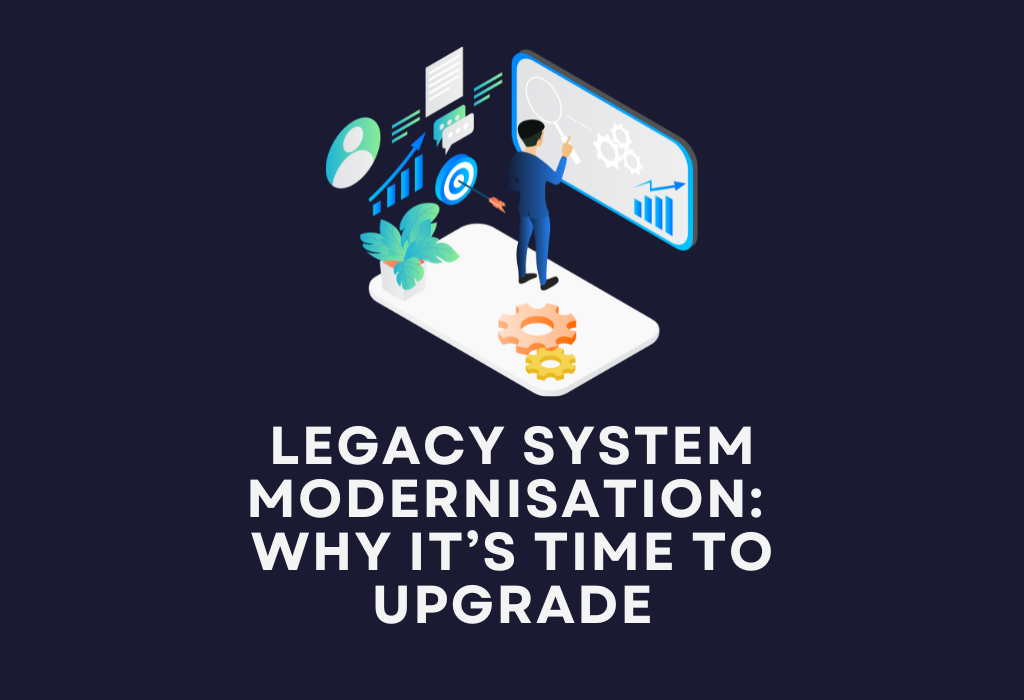Legacy System Modernisation: Why It’s Time to Upgrade
Introduction: The Need for Modernisation
In today’s fast-paced digital landscape, businesses must continually update their systems to ensure scalability, improved performance, and enhanced user experiences. Many companies face challenges with outdated legacy systems that hinder growth and efficiency. In this blog, we will explore the journey of modernising a legacy system, detailing the entire process, how we managed data migration, and discussing the benefits of system upgrades—all while maintaining ongoing project operations.
Challenges of Legacy Systems
Legacy systems, while once reliable, present several challenges that can impede growth and performance. One major concern is the lack of ongoing support and updates, which exposes users to security vulnerabilities and potential performance bottlenecks. As these systems expand and user demands increase, organizations often experience low processing times, resulting in slower response rates and a diminished user experience.
Risks and Challenges of Legacy Systems
Legacy systems pose various risks and challenges to an organization, including:
- Security Risks: Outdated systems are more susceptible to security vulnerabilities and attacks, lacking the necessary updates to protect against modern threats.
- Inefficient Operations: Legacy systems often lack features to meet modern business demands, slowing down operations and decreasing productivity.
- Increased Maintenance Costs: As systems age, they become more expensive to maintain due to scarce components and specialized IT skills.
- Integration Issues: Legacy systems are often isolated, making it challenging to integrate with other modern applications, requiring significant resources and custom coding.
- Compliance Risks: Many legacy systems are not compliant with current data protection regulations, which can result in hefty fines and legal penalties.
These challenges underscore the necessity for a modernisation strategy that addresses these issues while providing a scalable solution for future growth.
How We Did It
- Initial Planning and Research: We conducted a thorough analysis of the existing legacy system, identifying core components and features that needed retention or reworking. This planning phase helped us create a comprehensive migration roadmap.
- Parallel Development Environment: To minimize disruption, we established a parallel development environment, allowing us to build and test the new system while keeping the existing one operational.
- Data Migration Strategy: Data migration was critical. We developed a migration script to transfer the database schema and contents, utilized versioning for integrity, and conducted multiple test migrations to identify and resolve errors.
- Phased Rollout: We implemented a phased rollout, gradually releasing new features while monitoring performance and addressing any issues, enabling users to transition incrementally without interruptions.
- User Testing and Feedback: Involving end-users during testing was essential for gathering feedback to enhance usability and efficiency.
Benefits of System Modernisation
- Improved Performance: A modern tech stack allows for more responsive, real-time interactions, enhancing overall user experience.
- Scalability: Modern systems can handle higher traffic loads and complex datasets more efficiently.
- Enhanced User Experience: Dynamic features lead to more interactive, user-friendly interfaces.
- Seamless Transition: Phased rollouts ensure smooth transitions without business disruptions.
- Cost Efficiency: Streamlining the codebase reduces long-term maintenance costs and simplifies future updates.
Conclusion: The Importance of Modernisation
Upgrading legacy systems is not just about keeping pace with technological advancements; it’s about future-proofing your business. With proper planning, a solid migration strategy, and a focus on user experience, organisations can modernise their systems without disrupting ongoing operations.
If you or your organization are struggling with legacy system modernisation, we are here to help. Don’t hesitate to reach out for assistance in navigating your transition to a more efficient and secure system.



No comments to show.